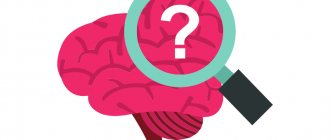All cultures are familiar with the concept of taboo. But what is it really - a sacred prohibition, a religious practice, or a way of regulating people's daily lives? In fact, we are talking about three ways of understanding this term: taboo as a historical phenomenon in Polynesia, as religious prohibitions, and, finally, taboo in a figurative, everyday sense. Religious scholar Ksenia Kolkunova spoke about how it all began, about the evolution of the concept of taboo and sacred prohibitions in the context of the history of religion. T&P took notes from her lecture.
Sacred prohibitions, or How to properly run away from your mother-in-law
Lecture. October 30, 2021. Cultural center ZIL. As part of the series “Taboo. Educational program"
Ksenia Kolkunova
Candidate of Philosophy, Associate Professor at PSTGU, religious scholar
Taboo is a key concept for religious studies. In this lecture we will talk about its evolution, the understanding of the term in Western science. The word “taboo” has entered modern languages in at least three contexts and three ways of use. We can talk about taboo as a specific phenomenon of Polynesian religiosity, from which thinking about taboo in Europe begins, then the concept expands and begins to apply to all religious systems. We can talk about taboos in a broad sense - as any sacred prohibition, religious instructions that limit human behavior. Finally, we can talk about taboos in a figurative sense: this is how we say in everyday speech that some things are forbidden, and this takes us as far as possible from the Polynesians, with whom it all once began.
Anthropology. James Cook and the Aborigines
In 1777, the notorious Captain James Cook first published stories in English about the Aborigines, who amazed him with their behavior. He discovered that the inhabitants of the small islands of Tonga have incredibly strict morals and regulations, and to describe them they use the word “taboo” (more precisely, “tapu” - but now they themselves say “taboo”, because they borrowed the generally accepted pronunciation). Subsequently, philologists and linguists found out that the word “tapu” means “specially marked, marked, highlighted” and even about the islands themselves, local residents say that these are “tapu” - the sacred forbidden southern islands. So Cook gives us the first starting point: taboo - that which is prohibited.
In the 18th–19th centuries, notes from travelers were an important source of knowledge about the aborigines. The final formation of the colonial system took place, and it was from the diaries of eyewitnesses that the European idea of what was happening on these mysterious islands, in Africa and South America was formed. This is how what we call anthropology was gradually formed - the study of unliterate peoples. As a discipline, it begins with Edward Tylor, who publishes Primitive Culture in 1871.
This is just a fiction
The story of Nootka Sound and the disputed territories is real. The East India Company and the United States, which laid claim to the lands, are also real. At the same time, the actual plot of the gloomy Hardy’s adventures is, of course, fictional. "Taboo" portrays Nootka Sound as a key disputed location in the war of 1812-1815. This is not entirely true.
The lands were indeed of interest, but long before the events described in Taboo. The Delaney family, with all its intrigues, never existed. But let’s not quibble: “Taboo” should be considered not as a historical work, but as a fiction based on historical events. Or like another Tom Hardy benefit.
Psychology. James Frazer and Sigmund Freud
In the 19th century, the classics of anthropology and religious studies believed that there is a certain universal essence of man (about the same among the wild aborigines on the Tongan Islands and among the highly intelligent French) and it is best to study it from the simplest and wildest tribes. In modern times, in principle, there was an attitude, associated with the general rationalism of the era, that all religious phenomena should have a natural cause, a scientific explanation.
The British scientist James Frazer, who himself did not travel anywhere and worked from the notes of travelers, published the work “The Golden Bough: A Study in Magic and Religion” in 1890. He noticed that the islanders' food taboos were often associated with family legends (for example, an ancestor, before his death, said that he could be reincarnated as a banana tree, so his descendants did not eat bananas), and believed that psychological taboos were the product of fantasy.
Sigmund Freud was also interested in aborigines. It seemed to him that the formation of the psyche of modern man could be studied using the example of savages. In Totem and Taboo he describes (also from secondary sources) various Aboriginal practices. Freud is interested in relations between the sexes, and from a variety of examples he chooses taboos that prohibit relations between mother-in-law and son-in-law, father-in-law and son-in-law, daughter-in-law and father-in-law, daughter-in-law and mother-in-law. Some tribes have restrictions on any contact between mother-in-law and son-in-law: they should not even talk, they should not even see each other. Freud gleefully deduces from this that such prohibitions are related to the potential attractiveness of the mother-in-law to the son-in-law, since she presumably resembles his wife. To eliminate this incestuous temptation, society creates a regulatory taboo. Another explanation is that a man may be frightened by what his wife will become. It turns out that Freud, on the one hand, has psychologism, and on the other, the introduction, if not of personal experience, then, in any case, of some European cultural codes.
Religious
Each religion has its own taboos, which can be radically different from others. Let's talk about the most common of them. By the way, it should be said that in religion the concepts of taboo and sin are practically inseparable. Therefore, what is a sin is a taboo. And vice versa.
holy day
In many religions of the world there is a special day on which you cannot work or do anything at all. All that is allowed is to pray and praise God. Later, such taboos grew into weekends and became firmly established in our lives. But initially they had a religious origin.
For violating this taboo, a person could face not only general censure, but even beating. And repeated violation of this taboo may even result in excommunication.
However, the reasons for the emergence of this taboo were unlikely to be religious. In ancient times, when a person's working day lasted from sunset to dawn, people simply needed at least one day of rest. Later (although perhaps earlier) a religious component was woven into this. It is quite possible that one of the existing religions, in order to attract more believers to its side, specifically declared one of the days a day off. Later others followed her example. In addition, it was assumed that a person should definitely devote his day off to serving God (gods), which means visiting spiritual buildings.
Frequency Keepers. TOP 20 GLOBAL DECEPTIONS OF HUMANITY
Religion. Emile Durkheim and Rudolf Otto
Frazer believed that the roots of the religious worldview could be found in magic, Freud looked for the initial forms of religion in totemism - in general, then many scientists tried to build a system for the development of religion, starting with some minimal form. Like, for example, Emile Durkheim, who developed the theory of minimum religion.
Durkheim's The Elementary Forms of Religious Life (1912), on the totemic system in Australia, provides a framework that will often be used by scholars to talk about taboos. The scientist writes that religion is an institutional and practical design of a system of relations, implying the presence of sacred and profane objects.
Sacred objects evoke strong emotional feelings and are at the same time perceived as potentially threatening.
The situation in which the son-in-law sees his mother-in-law must be corrected with the help of some rituals, symbolic cleansing, and physical punishment.
A similar psychological theory of religion was created by the German theologian Rudolf Otto, who published the book “The Sacred” in 1917. He, too, argues that sacred, non-rational experience produces two basic experiences—awe and horror.
Taboo for everyone and everyone
To what extent do the prohibitions that exist in different religions fall into the realm of taboo? If we follow the idea that a taboo is everything that concerns both the sacred and the dangerous, requiring certain preparation for contact, then it is quite possible to classify food prohibitions in Judaism or the specific attitude towards cows in India as a taboo. The cow is not only something that should not be eaten or beaten, but it is also a source of purification practice. If someone breaks a taboo, he can be cleansed with cow urine - this is the sacred status of the cow in India. This is built into a certain theological system: for example, the god Krishna, according to Hindu beliefs, at a certain stage of his divine life was a shepherd.
Any typology of taboos is doomed to fail because of the many levels at which these taboos can exist. The most basic division is individual and collective. If you start to think like the 19th century authors, taboo is not just a Polynesian phenomenon, and this model can be applied to other religious traditions, such as the Celts: their sagas describe geas. Gaises can be interpreted as individual taboos that regulate the life of a particular individual. The more important the hero, the more gays he has. For example, the situation with Cuchulainn was very sad: he is a great hero, he has a lot of gesses, and at some point they began to contradict each other, which is why he died.
Individual taboos are associated with an outstanding person, but they always also include prohibitions associated with gender, place, profession and some other social markers. Therefore, in the end, epic characters are endowed with more than just individual taboos. When we talk about taboos in religious systems, we are mainly dealing with collective taboos.
Durkheim identifies another basic type of taboo - prohibitions associated with some kind of contact. For example, food prohibitions - on food prepared in a certain way. Another form of contact taboo is avoidance taboo. You can avoid the same mother-in-law or people who have certain specific properties.
In some traditional cultures, for example, twins may be perceived as having a sacred nature and bringing good luck to others, but sometimes they are taboo people who can bring infection to the tribe. Among the Indians of South America there is a tribe where the mother is even kicked out for such disgrace.
There are prohibitions associated with human behavior: taboos on certain gestures, postures, actions or words. Taboo vocabulary is often related to religion or profession. For example, among hunters in the Arkhangelsk province at the end of the 19th century, it was forbidden to mention the name of the animal you were hunting; it was necessary to use euphemisms: “went for the scythe,” etc.
There are many taboos associated with blood, including menstrual blood. In some cultures, these prohibitions are built into the theological system. The biblical concept that blood contains the soul further leads to the prohibition of blood transfusions among Jehovah's Witnesses. Blood turns out to be taboo, for example, in Shinto culture in Japan, where a woman during her menstruation leaves the village and does not return until she undergoes a purification procedure.
The role of taboo today
Today, confirmation that the taboo system has largely lost its influence on some areas of society is the existence of same-sex marriage. Previously, due to the need to continue the human race, such relationships were prohibited. Now, most of society calmly accepts the existence of same-sex couples. And the legitimacy of abortion and euthanasia shows freedom from the prohibition on murder.
Despite the fact that taboo has largely lost control over some areas of society, nevertheless, many countries still have their taboos.
Taboo as status
There are two basic sources of taboo. Firstly, prohibitions are often associated with “antisocial” phenomena: leaders, sorcerers, blacksmiths (they do strange things) and narrow specialists (a specific circle of knowledge, it is better to stay away from them) become taboo.
By the way, for those who are already outside of society, some taboo actions turn out to be not so taboo. For example, the Hawaiian Indians, like virtually all human cultures, prohibit incest; a person who breaks this taboo can only be purified by death. But there is an exception - the leader: for him, incest is not only possible, but also extremely desirable, because children born from such a marriage are perceived as untouchable, as future leaders.
Shintoism considers death to be the main source of defilement. It got to the point that in the Middle Ages, emperors had to issue decrees prohibiting throwing out corpses in the forest: they were not happy, naturally, that the empire turned out to be some kind of chaotic dump of corpses, but people believed that a corpse was an antisocial element, so it should be thrown out and pretend that nothing happened.
Secondly, people in a state of transition from one status to another turn out to be “antisocial”. Anthropologist and folklorist Arnold van Gennep, in his book Rites of Passage (1909), writes that any rite associated with a change of state (initiation or, for example, a wedding) is built on the principle of separation: the person experiencing the transition is separated (geographically or symbolically) from the main part of the group, and only when he goes through certain practices will he be able to return and, having received a new name, become a full-fledged member of society in a new status. In the Andaman Islands it is considered incorrect to use the name of a deceased person before the end of mourning: this can interfere with the process of his transition from the state of “living” to the state of “dead”. Lévi-Strauss writes that in Australia not only the name of the deceased is taboo, but also all words with the same root. A common version of the taboo is when a child is not named after a deceased relative. California Indians have a limited number of names, and two people cannot have the same name: if the limit of names in a tribe is exhausted, the children will go nameless until someone dies and the name becomes free.
Black mark taboo
In general and in general, it is clear that we are talking about a term denoting a sacred prohibition or other restriction imposed on a certain action, object, place or activity.
However, among some peoples, along with the Polynesian Papuans, this word could carry another, darker and more unpleasant meaning - “unclean, dangerous, vicious, terrible, damned.”
The beliefs of primitive people are not much different from modern ones, which admit the existence of evil forces (Antichrists, demons, deities, etc.). In addition, these deities/dark forces, bringing misfortunes, grief, illness and death, could endow people or objects with terrible properties, which sometimes turned out to be much worse than illness and death.
And if someone who was “marked” by these evil forces died, then absolutely everything with which the deceased was associated - from the house where he lived to the cart on which he was taken to the burial place - was considered unclean, cursed .
It was something absolutely rejected and inviolable due to its extreme danger and destructiveness.
Not only those who were “touched” by evil forces could become a taboo person, but also those unfortunate people who had the imprudence to violate any of the tribal prohibitions - the so-called taboo of the first kind.
Anyone caught violating the ban could be punished not only by exile, but also by death - so that he would not bring disaster to his fellow tribesmen and would not “infect” them with his curse.
A taboo person evoked not sympathy or pity among those around him, but only animal fear and disgust, since it was impossible to cleanse himself of this curse either during life or after the transition to another world. They just haven't figured out a way...
Modern taboos are social, not sacred
Today, not only religious systems, but also everyday superstitions bear the imprint of primitive taboos. Fishermen, shepherds, creative people have professional prohibitions (surely everyone has heard about an actor’s desire to break a leg) and almost all representatives of professions involving danger to life, for example, athletes: a very thin line separates them from failure, and that’s why they hold on for the opportunity to preserve this luck. We call it professional superstition - but what is it if not a taboo?
Taboos in their primitive sense, which did not allow people to go beyond the social, have not gone away, it’s just that instead of tribes we now have subcultures and information circles.
Any social environment creates rules that can or cannot be broken. There are also taboos in the fitness club - if you break them, everyone will look at you askance, because this small environment wants to remain stable. There is no longer a moment of sacredness left here and we are talking exclusively about the social dimension.
The same is true in Oceania, where it all began. In the 18th century, Cook came to the Polynesians, learned about the taboo and took this knowledge to Europe. Europeans really liked the idea of taboo and started using the word. And while they were developing anthropology, the colonial system collapsed in Polynesia and the taboo (just like ours) gradually lost its sacred meaning. In Hawaii, the word "kapu" (taboo) is now used to sign public monuments, and in French Polynesia, taboo refers to any private property. I believe that this redefinition of the concept of taboo is a legacy of our colonial visit and our taking the term, expanding it to non-religious meanings, and importing it back into an emergent environment where it takes on new meanings.
Taboos in different cultures
The topic of widespread prohibitions in society is closely related to the topic of ethics and morality. Taboos are subject to constant change. Along with the changes taking place in society, the system of prohibitions is also changing. Limitations exist not only at the general level, but also at the individual level. Each person can determine for himself the appropriateness of certain prohibitions, or create his own system of taboos.
Different countries and cultures have their own taboos. For example, in Muslim countries they are determined not by society, as in most countries of the modern world, but by a system of beliefs.
An example of a taboo caused by society is the ban on smoking. So, today in most countries it is not allowed in public places, and neglecting it entails a fine. And in the United Arab Emirates, a prison sentence is provided for violating this ban.
Literature
- Durkheim E. Elementary forms of religious life. M.: “Elementary Forms”, 2018
- Mystic. Religion. The science. Classics of world religious studies. Anthology. M.: “Canon+”, 1998.
- Freud Z. Totem and taboo. St. Petersburg: ABC-classics, 2005.
- Eliade M. History of faith and religious ideas. In 3 vols. M., 2002–2003
- Harvey G. Food, Sex and Strangers: Understanding Religion as Everyday Life. Routledge, 2013.
Where can you study on the topic #anthropology
Well
Historical anthropology
As you type
Well











